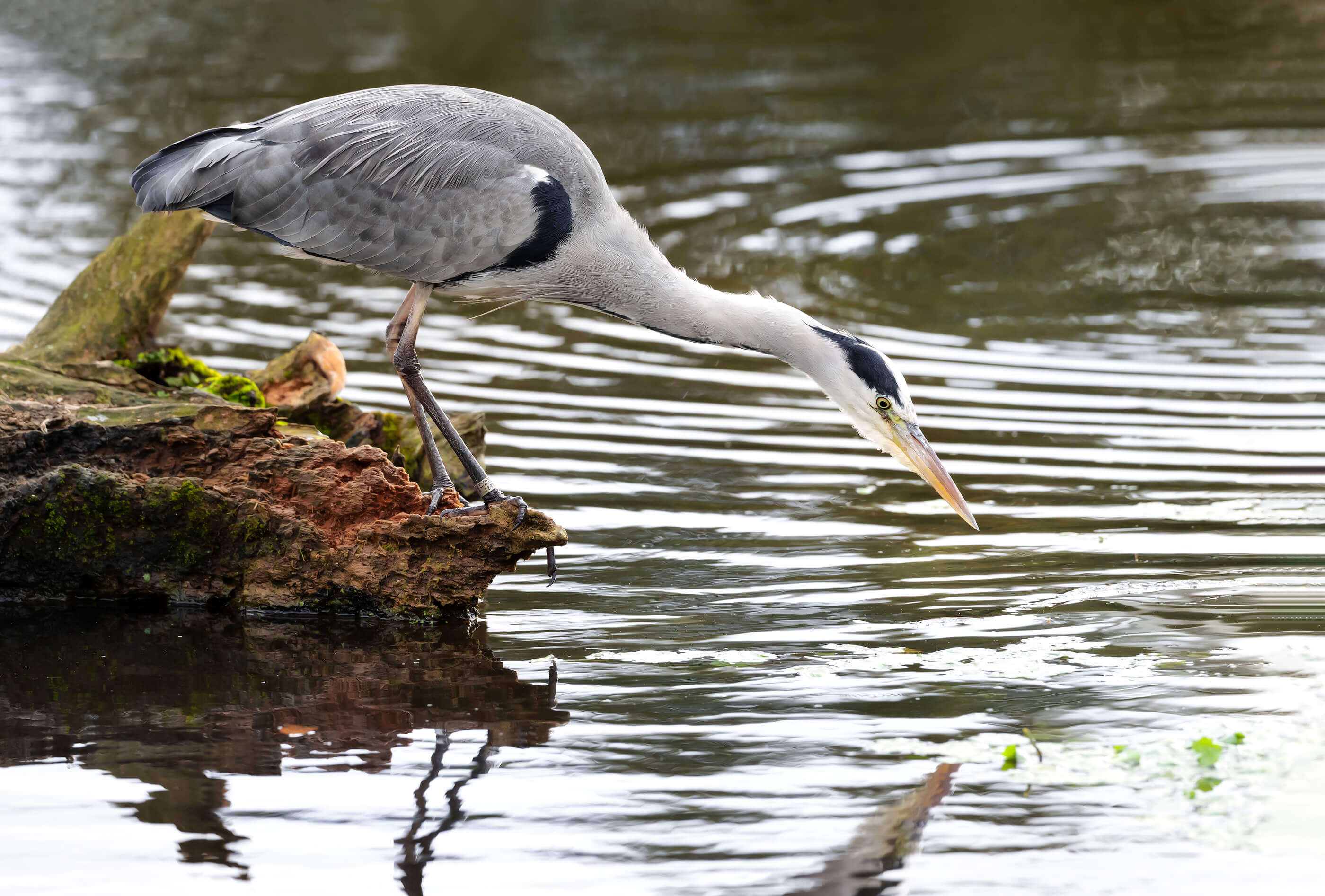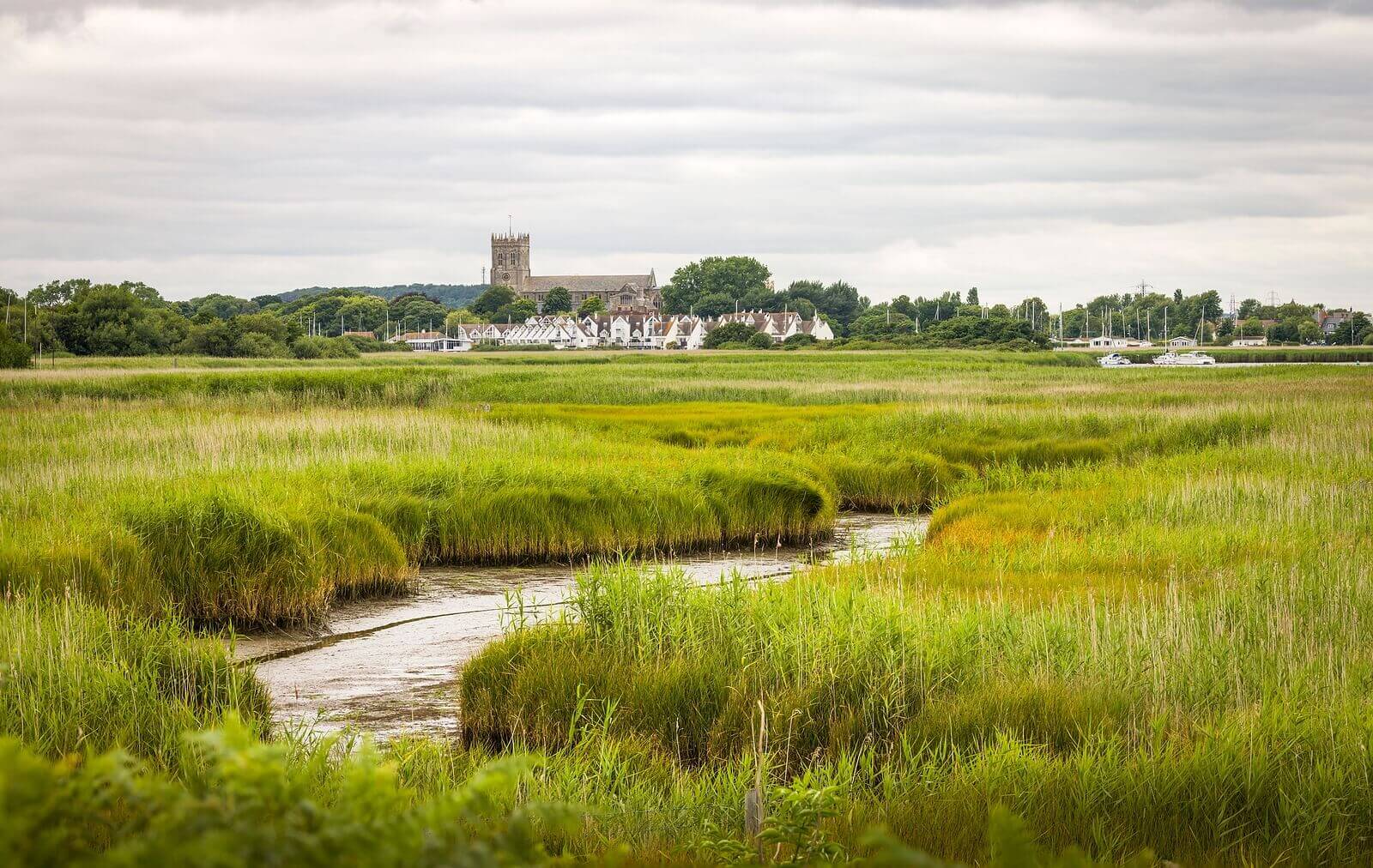World Wetlands Day is celebrated on 2nd February every year, but many people aren’t aware that wetlands are some of the planet’s most important ecosystems. Fresh water is the heartbeat of civilisation, keeping humans, animals, and plants hydrated to ensure their survival. But did you know our wetlands are under threat?
During the last 100 years, the UK has lost 90% of its wetlands. Much of this depletion has occurred since the industrial revolution, which has seen large swathes of wetlands drained, dug up and built over. Wetlands are disappearing three times faster than our forests. This vanishing act should be a major concern, as it contributes to global warming and threatens our freshwater and wetland species with extinction.
We’ve dipped our toes into the water to tell you everything you need to know about this natural British habitat and what you can do to help protect and restore our wetlands.
What are wetlands?
A wetland is an area of land that is covered by water, either seasonally or permanently. They can be freshwater or saltwater and may be natural or artificial. Examples of wetlands include:
- swamps
- lakes
- saltmarshes
- fens
- lagoons
There are even underground wetlands, but the main point is that wetlands come in all shapes and sizes, with the amount of water present varying greatly.
Where are wetlands located in the UK?
Famous for its wet weather, the UK’s rain-soaked lands offer perfect conditions for forming wetlands. From the manufactured lagoon at Minsmere, Suffolk, with its impressive variety of birds, including avocets and nightingales, to England’s oldest fen — the Wicken Fen Nature Reserve — there are many lush wetlands to explore.
Whether it’s the beck that runs through your village or one of the country’s longest rivers, you’ll be able to enjoy the beautiful scenery and calming qualities of being by the water. You’ll also get to glimpse of some of the UK’s best and often rarest wildlife.
How do wetlands work?
Wetlands act as sponges and play an important role in water absorption. Their plants and soils have water storage capabilities, naturally protecting surrounding areas from flooding and offering valuable water sources during periods of drought.
The wetland soils and plants either slowly release the water into nearby bodies of water, or it evaporates. If required, the water can be physically forced out by someone or something draining it. Wetlands also purify the water that enters our waterways by removing pollutants and harmful substances.
Even though wetlands naturally adapt to changing conditions and can store a staggering amount of water, there’s still a limit on how much liquid they can hold. One acre of wetlands can store as much as 300,000 gallons of water, but you will notice more pooling surface water when a wetland exceeds its carrying capacity.
Why are wetlands important to ecosystems?
Wetlands are on par with rainforests and coral reefs as one of the most productive ecosystems in the world. As well as acting like a giant reservoir and supporting biodiversity, they are valuable for many reasons. This includes improving water quality control, protecting us from extreme weather events, recreation (e.g., fishing and photography), reducing coastal erosion, and providing a home for thousands of aquatic species.
The impressive volume of water that gathers in wetlands during floods is also a stimulus for plant growth, causing an increase in biomass (plant material), which is a renewable energy source.
Of course, we shouldn’t forget the cultural value of wetlands, enabling families, children, and individuals to get up close and personal with nature.
Wetlands are the missing link between land and water, and best of all, they do it all for free.
What types of plants and animals live in wetlands?

Many plant and animal species rely on wetlands to thrive, including a number of rare and endangered species. Wetlands support many animal groups, such as:
- amphibians (alligators and snakes)
- birds (grouse and heron)
- fish (striped bass and sea trout)
- mammals (beavers and otters)
- reptiles (snakes and freshwater turtles).
Three types of plants grow in wetlands:
- Submerged plants whose stems and leaves grow entirely underwater
- Plants that float on the water’s surfaces
- Emergent plants that reside near the water’s edge.
The latter make up the majority of wetland plants. The types of plants you find in wetlands will depend on the type of wetland ecosystem. From evergreen trees and sedges in bogs and fens, to reeds and rushes in saltwater marshes, wetland plants all help the habitat retain water.
How are wetlands beneficial to animals?
Many species are uniquely adapted to aquatic environments and, without wetlands, would die out. Many animals depend on wetlands for survival, with creatures like freshwater snails and mussels spending their entire existence there. Others (known as obligate species) only visit wetlands to breed or raise offspring.
They are a great place for migrating animals to rest and refuel, a nesting ground for birds, and a welcome respite from predators for prey species. The water is also a reproduction pool, giving fish and shellfish an environment to spawn.
How do wetlands benefit humans?
Humans have plenty to thank wetlands for. They are part of our natural infrastructure and vital for our health and prosperity. Spending time around wetlands and immersing yourself in their natural beauty can reduce levels of anxiety, depression, and stress. Wetlands are also a popular destination for outdoor activities. Wildlife photographers, hiking, and bird-watching are all popular wetlands pastimes.
We should always appreciate wetlands as an educational source, teaching the public about the value of water resources and the level of protection they provide. Wetlands can help in the fight against climate change. They are estimated to store more than one-third of the world’s terrestrial carbon, but their destruction results in the significant release of greenhouse gases into the atmosphere.
Wetlands are also responsible for quenching our thirst and appetite. They ensure we have clean drinking water and supply a broad range of wild and cultivated food sources such as fish and plants (rice, seaweeds, etc.). Incredibly, more than half the world relies on wetland-grown produce as rice for their staple diet.
The water released by wetlands is filled with vegetative matter that is essential for sustaining fish that meander in these waterways. Water for agriculture and feeding livestock also derives from wetlands, as well as cool water used in the energy sector.
Wetlands are a buffer against disasters such as flooding and coastal storms because of their vast water storage. Mangroves and salt marshes help shield the 60% of the world’s population that live along our coasts from the impacts of coastal flooding. Wetlands also help us rebound quicker from natural disasters.
More than one billion people depend on wetlands for their living, but the reality is their impact affects us all. Their value benefits the global population and goes way beyond economic benefits, including decreasing the cost of drinking water treatment, reducing property damages from catastrophic weather, and controlling shoreline erosion.
Why are wetlands under threat?
Many wetlands have been drained, and their vegetation cleared to make way for housing, agriculture and industrial development. This threat continues to loom large for our wetlands, with tourism facilities another benefactor of our greed and need. Wetlands are typically located in flat and low-lying areas, making them an easy target for drainage and clearance.
High pollution rates in wetlands are another warning sign. Did you know that 80% of our global wastewater is released into wetlands untreated? Plastic pollution is a widespread problem in oceans, while fertilisers and pesticides used in modern-day intense farming are another danger.
Leakage from landfills and dumps, oil spills, and factory pollution can all end up in wetlands, causing degradation and endangering the plant and animal communities.
These communities also need to avoid invasive non-native species (INNS), as it can lead to an ecosystem imbalance or disease spreading. If they start competing for natural resources and space, the impact on the native species can be devastating. One example of an invasive species is the killer shrimp which feeds on small fish and invertebrates.
If we put the brakes on climate change, we can also boost our wetlands. They have a complex relationship with climate change as changes in rainfall and temperature increases cause them to either dry out or be submerged if located in coastal areas.
All of these factors contribute to the loss of wetlands, and is why they demand immediate protection to maintain their biodiversity.
What can we do to protect wetlands?
As much as wetlands are areas of aesthetic appeal and recreation, these rapidly disappearing ecosystems need our care and attention to preserve the biodiversity and critical services they provide.
Here are three simple things you can do to help our wetlands:
- Conserve water – Turn the taps off while you brush your teeth. Install a rainwater harvester system. Check your pipes and fittings for any leakages. The list is endless.
- Reduce pollution – Support local businesses and aim to buy organic, eco-friendly, and sustainable products. Consider installing energy-efficient appliances and lightbulbs. Could you walk or bike to work instead of drive?
- Responsible waste disposal and recycling – Even though landfills are sited away from wetlands, they don’t stop irresponsible waste disposal (especially plastic) from disturbing the aquatic inhabitants. Reduce your plastic use and reuse and recycle wherever possible. Composting is an effective way to deal with leftover food waste and put your eggshells and tea bags to good use. If you come across litter in public parks or wetlands, don’t ignore it — pick it up and throw it away.
We need water to live, just as we need air to breathe. Wetlands support a remarkable level of biodiversity, meaning their conservation is essential for life on Earth. Get your feet wet and do your bit to help restore our wetlands for everyone to enjoy.
